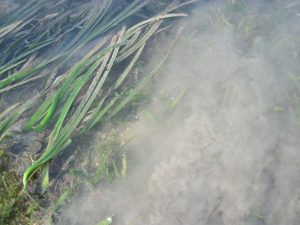Seagrass protection by limiting dredging during storm periods?

To protect seagrasses near ports in temperate Australia, it is better to conduct dredging operations in winter and allow dredging to continue under turbid conditions caused by winter storms, than to stop and wait for clearer conditions in spring or summer. This is one of the conclusions of a recent study of turbidity management during a dredging operation to widen the access channel at the Port of Adelaide in South Australia.
Dr Paul Erftemeijer from DAMCO Consulting, who presented the study at the recent PIANC-APEC 2020 Conference in Fremantle (1-3 December 2020), explains: ‘During the winter months, waters are naturally cold and often turn murky due to storms. The seagrasses show almost no growth or metabolic activity in this season and need very little light to survive. During spring and summer, however, when waters become warmer and clear up, light requirements of the seagrasses rise rapidly to meet the demands for growth, reproduction and oxygenation of their root systems’.
During the dredging campaign at Adelaide, winter storms regularly caused turbidity to exceed the trigger levels that had been established to manage the dredging plumes for the protection of the seagrasses. Dredging was initially ordered to stop during such events.

However, it was soon realised that this wasn’t really in the best interest of the seagrasses, as it would cause the dredging campaign to extend into the warmer months. Dredging was therefore allowed to continue and the whole operation was completed well before the onset of summer. Post-dredging mapping and dive surveys have since confirmed there has been no significant impact on the seagrasses from the dredging.
Interested in the full story? Send us an email and we will send you the complete paper.







